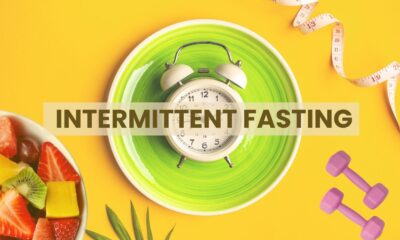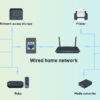How-To
How to Practice One Meal A Day
Learn how to safely practice One Meal A Day (OMAD) for weight loss and health benefits. A step-by-step guide with nutrition tips and common pitfalls to avoid.
One Meal A Day (OMAD) is a powerful form of intermittent fasting that has garnered attention for its potential to aid in weight loss, improve metabolic health, and simplify eating routines. By condensing your entire day’s caloric intake into a single, focused meal, you engage in an extended daily fast. While the concept sounds straightforward, successfully practicing OMAD requires careful planning, a strong understanding of nutrition, and an awareness of your body’s signals. This guide will walk you through how to implement OMAD safely and effectively.
What is One Meal A Day (OMAD)?
OMAD is an eating pattern where you consume your daily calories and nutrients within a short window, typically one hour, followed by a 23-hour fasting period. For example, if you eat your meal at 6:00 PM, you would fast until 6:00 PM the next day. During the fasting period, only non-caloric beverages like water, black coffee, and plain tea are permitted.
The core principles behind OMAD’s potential benefits include:
- Calorie Restriction: By limiting eating to a single meal, it often becomes easier to naturally consume fewer calories, leading to a calorie deficit necessary for weight loss.
- Insulin Sensitivity: Extended fasting periods can lead to lower and more stable insulin levels, which may improve insulin sensitivity and aid in fat burning.
- Autophagy: Fasting can trigger autophagy, a cellular clean-up process where the body removes damaged cells and regenerates new, healthier cells.
- Simplicity: OMAD can simplify meal planning and reduce time spent on food preparation and eating.
Step 1: Consult a Healthcare Professional
Before you begin OMAD, or any significant dietary change, it is crucial to consult with a doctor or a registered dietitian.
- Why it’s important: OMAD is an extreme eating pattern and is not suitable for everyone. A healthcare professional can assess your individual health status, discuss potential risks, especially if you have pre-existing conditions like diabetes, eating disorders, or are pregnant or breastfeeding.
- Contraindications: Individuals who are pregnant, breastfeeding, children, those with a history of eating disorders, or people with certain medical conditions (e.g., Type 1 diabetes, severe hypoglycemia) should generally avoid OMAD. If you are on medication, especially for blood sugar or blood pressure, OMAD could interfere, so medical supervision is essential.
Step 2: Gradually Transition to OMAD
Jumping directly into a 23-hour fast can be challenging and lead to discomfort. A gradual approach is key to adaptation and sustainability.
- Start with Shorter Fasting Windows:
- Begin with less restrictive intermittent fasting methods, such as 16/8 (fast for 16 hours, eat within an 8-hour window) or 18/6 (fast for 18 hours, eat within a 6-hour window).
- Practice these for a few weeks until your body adjusts to longer periods without food. This helps your body become more efficient at burning fat for fuel.
- Gradually Reduce Eating Window:
- Once comfortable with 16/8 or 18/6, slowly narrow your eating window. For example, transition to 20/4 (20 hours fasting, 4 hours eating), then eventually to OMAD (23/1).
- Listen to your body and adjust the pace as needed. Don’t rush the process.
Step 3: Choose Your OMAD Eating Window
Consistency in your eating time can help your body adapt to the new rhythm.
- Select a Consistent Time:
- Choose a time for your one meal that fits your lifestyle, social schedule, and energy levels. Many people prefer the evening, as it allows them to eat with family and friends and provides sustained energy for evening activities.
- Others prefer a lunchtime meal. The specific time is less important than its consistency.
- Factor in Hunger and Satiety:
- Pay attention to when you feel the most natural hunger and when a larger meal feels appropriate. Some people feel more energetic in the morning and prefer an earlier meal.
Step 4: Plan Your OMAD Meal for Nutritional Completeness
This is the most critical step in practicing OMAD safely and effectively. Since you’re only eating once, that meal must be nutritionally dense to meet all your daily requirements.
- Prioritize Nutrient Density:
- Your single meal must provide all necessary macronutrients (protein, fats, carbohydrates) and micronutrients (vitamins, minerals).
- Protein: Aim for a substantial amount of lean protein (e.g., chicken, fish, beef, tofu, legumes) to support muscle maintenance and satiety. Protein helps prevent muscle loss during weight loss.
- Healthy Fats: Include sources of healthy fats (e.g., avocado, nuts, seeds, olive oil). Fats are essential for hormone production, nutrient absorption, and provide sustained energy.
- Complex Carbohydrates: Incorporate whole grains (quinoa, brown rice, oats), starchy vegetables (sweet potatoes, potatoes), and legumes. These provide sustained energy and fiber.
- Plenty of Vegetables and Fruits: These are packed with vitamins, minerals, antioxidants, and fiber. Aim for a wide variety of colors to ensure a broad spectrum of nutrients.
- Ensure Adequate Calories:
- While OMAD can lead to natural calorie restriction, ensure your single meal provides enough calories to meet your body’s minimum needs (your Basal Metabolic Rate plus activity). Too few calories can lead to nutrient deficiencies, fatigue, and muscle loss.
- Use an online calculator to estimate your daily caloric needs and aim to meet them within your meal. For significant calorie deficits, consult a dietitian.
- Hydration is Key (During Fasting and Eating):
- Drink plenty of water throughout the entire 23-hour fasting period.
- You can also consume black coffee and plain tea (without sugar, milk, or cream) as these are virtually calorie-free and can help with appetite suppression.
- During your meal, continue to drink water.
- Consider Electrolytes:
- During extended fasting, you may lose electrolytes (sodium, potassium, magnesium). This can lead to headaches, fatigue, and muscle cramps (“keto flu” or “fasting flu”).
- You can add a pinch of sea salt to your water during the fasting window. If symptoms persist, consider a low-calorie electrolyte supplement or ensure your meal is rich in electrolyte-containing foods (e.g., leafy greens, avocados).
Step 5: Manage Hunger and Cravings During the Fasting Window
Learning to cope with hunger pangs is crucial for OMAD success.
- Stay Busy: Distract yourself with work, hobbies, or errands. Often, hunger is a habit rather than a true physiological need.
- Drink Water: As mentioned, sometimes thirst is mistaken for hunger. Drink a large glass of water.
- Coffee or Tea: Black coffee and plain tea can help suppress appetite.
- Light Activity: A short walk or light stretching can sometimes alleviate hunger pangs. Avoid intense exercise during the initial adaptation phase.
- Listen to Your Body: Differentiate between true hunger and psychological cravings. If you feel dizzy, severely weak, or unwell, break your fast safely.
Step 6: Listen to Your Body and Adjust
OMAD is not a one-size-fits-all solution. Your body’s response will dictate how sustainable it is for you.
- Monitor Energy Levels: Pay attention to how you feel throughout the day. Do you have sustained energy, or are you constantly fatigued?
- Observe Digestion: Eating a large meal at once can sometimes cause digestive discomfort. Adjust portion sizes or food choices if needed.
- Track Progress (Beyond Weight): While weight loss is a common goal, also observe improvements in energy, mental clarity, and overall well-being.
- Don’t Force It: If OMAD consistently makes you feel unwell, overly restrictive, or causes negative impacts on your social life, it might not be the right approach for you. Consider less restrictive intermittent fasting methods.
- Flexibility: You don’t have to do OMAD every single day. Some people practice it a few times a week, while others do it most days. Find what works best for your body and lifestyle.
Potential Benefits and Drawbacks of OMAD
Potential Benefits:
- Weight Loss: Often leads to a natural calorie deficit.
- Simplicity: Reduces meal prep and decision fatigue.
- Metabolic Health: May improve insulin sensitivity and blood sugar control.
- Autophagy: Potential cellular repair benefits.
- Cost Savings: Less food consumption can lead to lower grocery bills.
Potential Drawbacks:
- Nutrient Deficiencies: High risk if the single meal isn’t carefully planned and nutritionally complete.
- Extreme Hunger/Fatigue: Especially during initial adaptation.
- Social Challenges: Eating only once a day can interfere with social gatherings centered around food.
- Digestive Issues: Consuming a large meal in one sitting can cause bloating or discomfort for some.
- Not for Everyone: Contraindicated for certain groups (pregnant, breastfeeding, diabetics, eating disorder history).
- Risk of Binge Eating: Some individuals may overcompensate during their eating window, negating the calorie deficit.
Practicing One Meal A Day can be a powerful tool for achieving weight loss and improving health markers, but it demands discipline and a deep understanding of nutritional needs. By starting gradually, meticulously planning your meal, staying hydrated, and most importantly, listening to your body’s signals, you can explore the potential benefits of OMAD safely and effectively.
Frequently Asked Questions (FAQ)
Q1: Is OMAD healthy for everyone?
No, OMAD is not healthy or suitable for everyone. It is an extreme form of intermittent fasting. Individuals who are pregnant or breastfeeding, children and adolescents, those with a history of eating disorders, people with diabetes (especially Type 1), individuals with hypoglycemia, or those on certain medications should not attempt OMAD without strict medical supervision. Always consult a healthcare professional before starting OMAD.
Q2: What should I eat for my one meal on OMAD?
A2: Your single meal on OMAD must be nutritionally dense and complete. Focus on a balance of:
- Lean protein: (e.g., chicken, fish, lean beef, eggs, tofu, lentils) to support muscle and satiety.
- Healthy fats: (e.g., avocado, nuts, seeds, olive oil) for essential nutrients and sustained energy.
- Complex carbohydrates: (e.g., whole grains like quinoa/brown rice, sweet potatoes, legumes) for energy and fiber.
- Plenty of non-starchy vegetables: (e.g., leafy greens, broccoli, bell peppers) for vitamins, minerals, and fiber.
- Some fruit: for additional vitamins and antioxidants. The goal is to pack all your daily caloric and nutrient needs into that one meal.
Q3: Can I drink anything during the fasting window on OMAD?
A3: Yes, during the 23-hour fasting window of OMAD, you can drink non-caloric beverages. This includes:
- Water (plain, sparkling, or with a slice of lemon/lime)
- Black coffee (without sugar, milk, or cream)
- Plain tea (without sugar, milk, or cream)
- Some people also consume a small amount of electrolytes (e.g., a pinch of sea salt in water) to prevent headaches or fatigue, especially during the initial adaptation phase.
Q4: Will I lose muscle mass on OMAD?
There’s a concern about muscle loss with any significant weight loss strategy, including OMAD. To minimize muscle loss, it is crucial to:
- Ensure your single meal contains adequate protein (aim for 0.7-1 gram of protein per pound of lean body mass).
- Incorporate strength training into your routine. Resistance exercise signals your body to retain muscle mass. While some minor muscle loss can occur with rapid weight loss, proper protein intake and strength training can significantly mitigate this risk.
Q5: How long does it take for the body to adapt to OMAD?
The adaptation period for OMAD varies greatly among individuals, but it typically takes 2-4 weeks to fully adjust. During this time, you might experience hunger pangs, fatigue, headaches, or irritability. Gradually transitioning from shorter fasting windows (like 16/8 or 18/6) can make the adaptation process smoother. Consistent adherence and proper hydration are key to helping your body adjust.



















